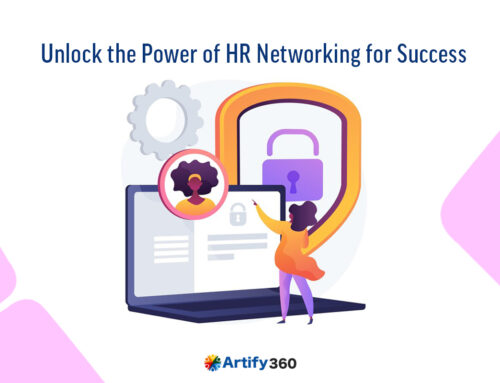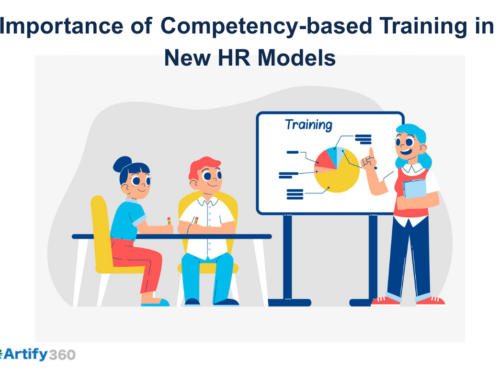In today’s fast-paced work environment, where time is precious, and efficiency is paramount, employee self-service has emerged as a crucial tool. This article delves into the world of employee self-service and its significance.
We will explore how this technology empowers employees and HR teams, simplifies processes, and enhances productivity. Employee self-service is not just a convenience; it’s a gateway to efficiency and empowerment. Let’s unravel the what, why, and how of this innovative solution, tailor-made for the modern workforce.
Understanding employee self-service
Employee self-service, often called ESS, is a user-friendly and efficient way to access and manage employees’ personal information, HR-related tasks, and work-related data within an organization. It’s like having a self-help desk tailored to each worker. Here are its essential functions:
- Personal information management:
Employees can update their contact details, emergency contacts, and other personal information. This ensures that the organization has the most accurate and up-to-date data. - Leave requests:
ESS allows employees to request time off, view their leave balances, and check the status of leave requests. It streamlines the often cumbersome leave management process.
- Payroll information:
Access to pay slips, tax forms, and other financial information is a vital ESS function. It empowers employees to monitor their earnings and deductions, simplifying tax season.
- Time and attendance:
Employees can view their attendance records, punch in or out, and track their work hours. This feature promotes transparency and ensures that they are compensated accurately.
- Performance reviews:
Some ESS systems offer tools for goal setting, performance assessments, and feedback collection. Employees can participate in their performance management process, making it more engaging.
- Training and development:
Access to training resources, e-learning modules, and development plans empowers employees to take control of their professional growth.
- Benefits enrollment:
During open enrollment periods, employees can make choices about health insurance, retirement plans, and other benefits through ESS.
- Communication:
ESS often includes messaging systems, notifications, and announcements to inform employees about company news and updates.
- Helpdesk requests:
Employees can submit IT support or HR service requests directly, expediting the resolution of issues.
Employee self-service puts a wealth of HR and employment-related information at employees’ fingertips. It reduces administrative work for HR staff, encourages employee engagement and responsibility, and enhances overall organizational efficiency. It’s a win-win for employees and employers alike.
Unlocking employee management and engagement with ESS
In today’s fast-paced corporate landscape, employee management and engagement are pivotal for a company’s success. This is where Employee Self-Service (ESS) emerges as a transformative tool. ESS simplifies how businesses interact with their employees, promoting easier management and enhancing engagement. Here’s how:
- Streamlined administrative tasks:
ESS lightens the load of HR departments by automating routine administrative tasks. Employees can update their personal information, request leave, and access payslips independently. HR staff can focus on strategic initiatives and more personalized employee support.
- Empowered workforce:
ESS empowers employees by granting them control over their data. They can easily make changes to their information, ensuring accuracy and timeliness. This autonomy fosters a sense of responsibility and accountability among employees.
- Enhanced communication:
Effective communication is essential for employee engagement. ESS often includes messaging systems and notifications informing employees about company updates, events, or policy changes. It’s a platform for two-way communication, allowing employees to voice concerns and receive prompt responses.
- Improved access to information:
Quick access to critical information is a hallmark of ESS. Employees can check their attendance records, view training materials, and access benefits details anytime. This empowers them to make informed decisions about their work and careers.
- Efficiency in leaves and attendance:
ESS simplifies leave requests and attendance tracking. Employees can request time off and quickly check their leave balances, while supervisors can approve requests promptly. This efficiency reduces the administrative burden and ensures accurate attendance records.
- Performance management and development:
Some ESS systems integrate performance management tools. This allows employees and managers to set goals, conduct performance assessments, and provide feedback. It encourages a more transparent, goal-oriented approach to career development.
- Benefits enrollment:
During open enrollment periods, employees can select their benefits through ESS. This makes the process more accessible and understandable, leading to better-informed choices.
- Employee engagement surveys:
ESS often supports the distribution of employee engagement surveys. These surveys provide valuable feedback, allowing organizations to make data-driven decisions to enhance the work environment.
- Accessibility and convenience:
ESS is accessible from various devices, making it easy for employees to engage with their workplace on their terms. This flexibility promotes engagement and satisfaction.
- Accountability and ownership:
ESS encourages employees to take ownership of their HR-related activities. This includes maintaining their data, tracking performance, and participating in company initiatives. It fosters a culture of accountability.
ESS emerges as a vital tool in a world where employee engagement significantly impacts productivity and retention. It facilitates efficient HR management while empowering employees to engage actively in their work lives.
This shift from traditional HR processes to a more modern, self-service approach can revolutionize how companies manage their workforce and drive engagement to new heights.
The role of HR software in empowering employee self-service
In the dynamic landscape of human resources, the role of HR software has evolved significantly. One of its groundbreaking aspects is the facilitation of Employee Self-Service (ESS). Here, we delve into HR software’s pivotal role in making this possible and its profound impact on modern workplace dynamics.
- Accessibility to personal information:
HR software provides employees with a user-friendly platform to access their personal information. This includes contact information, emergency contacts, and even their payroll data. HR software promotes data accuracy and transparency by allowing employees to review and update their information.
- Leave management:
ESS systems integrated into HR software simplify leave management. Employees can request time off, check their leave balances, and receive approvals electronically. This streamlined process reduces administrative work for HR personnel and employees, ensuring that leave policies are consistently and fairly applied.
- Payroll information:
One of the most significant aspects of ESS is the ability for employees to access their payslips and tax documents online. This feature eliminates the need to distribute payslips manually and allows employees to view their payroll history conveniently. This not only reduces paper usage but also enhances transparency in compensation.
- Training and development:
Many HR software platforms offer features for training and development. Employees can access training materials, enroll in courses, and monitor their progress. This fosters a culture of continuous learning and development within the organization.
- Performance management:
Performance management tools integrated with ESS enable employees and managers to set goals, conduct performance appraisals, and provide feedback. It promotes a transparent approach to performance assessment and encourages goal-oriented conversations.
- Communication hub:
HR software often includes a communication hub for important company updates, policy changes, and event notifications. This is a central place for disseminating information, making it easily accessible to all employees.
- Benefits enrollment:
Employees can select their insurance plans and other benefits using ESS during benefits enrollment periods. This simplifies the process, ensures accurate elections, and provides employees with a comprehensive understanding of their benefits.
- Employee engagement surveys:
ESS supports the distribution of employee engagement surveys. This valuable feedback mechanism enables companies to gauge employee satisfaction and make informed decisions to improve the workplace.
- Accessibility from anywhere:
One of the advantages of ESS through HR software is accessibility from various devices. Whether at work, at home, or on the go, employees can engage with HR functions at their convenience. This accessibility promotes engagement and allows employees to manage their HR-related activities actively.
HR software is the enabler of Employee Self-Service, transforming how companies interact with their workforce. This shift towards ESS represents a modern approach to HR management that aligns with the digital age, ultimately contributing to improved employee satisfaction and productivity.
Facilitate employee engagement with Artify360 HR
Employee engagement is a cornerstone of organizational success in today’s fast-paced work environment. Engaged employees are more motivated, productive, and committed to their jobs. Artify360 HR software offers a powerful solution to enhance employee engagement through its self-service capabilities.
- Empowering employees:
Artify360 allows employees to take control of their HR-related tasks. They can access their personal information, request time off, and view payslips and tax documents. This empowerment fosters a sense of ownership and responsibility, contributing to higher engagement.
- Streamlined communication:
Effective communication is crucial for engagement. Artify360 is a communication hub where vital company updates, policy changes, and event notifications are centralized. Employees can stay informed and engaged in the company’s activities.
- Training and development:
Artify360 offers features for training and development. The opportunity for continuous learning and skill development enhances engagement.
- Performance management:
Artify360’s performance management tools enable employees and managers to set and track goals, conduct appraisals, and provide feedback. Clear performance expectations and constructive feedback are key drivers of engagement.
- Employee surveys:
Artify360 can facilitate the distribution of employee engagement surveys. Gathering employee feedback is essential to understanding their needs and concerns, demonstrating that the organization values their input, and taking action to address issues, all of which enhance engagement.
- Accessibility and convenience:
One of the standout features of Artify360 is its accessibility. Employees can engage with HR functions anywhere, making HR tasks more convenient and flexible. This accessibility leads to a better work-life balance and increased job satisfaction.
Artify360 HR software’s self-service capabilities are valuable for boosting employee engagement. Artify360 creates an environment where employees are more engaged, satisfied, and committed to their roles by empowering employees, promoting communication, supporting development, and simplifying HR processes.
This not only benefits individual employees but also contributes to the overall success and growth of the organization.






